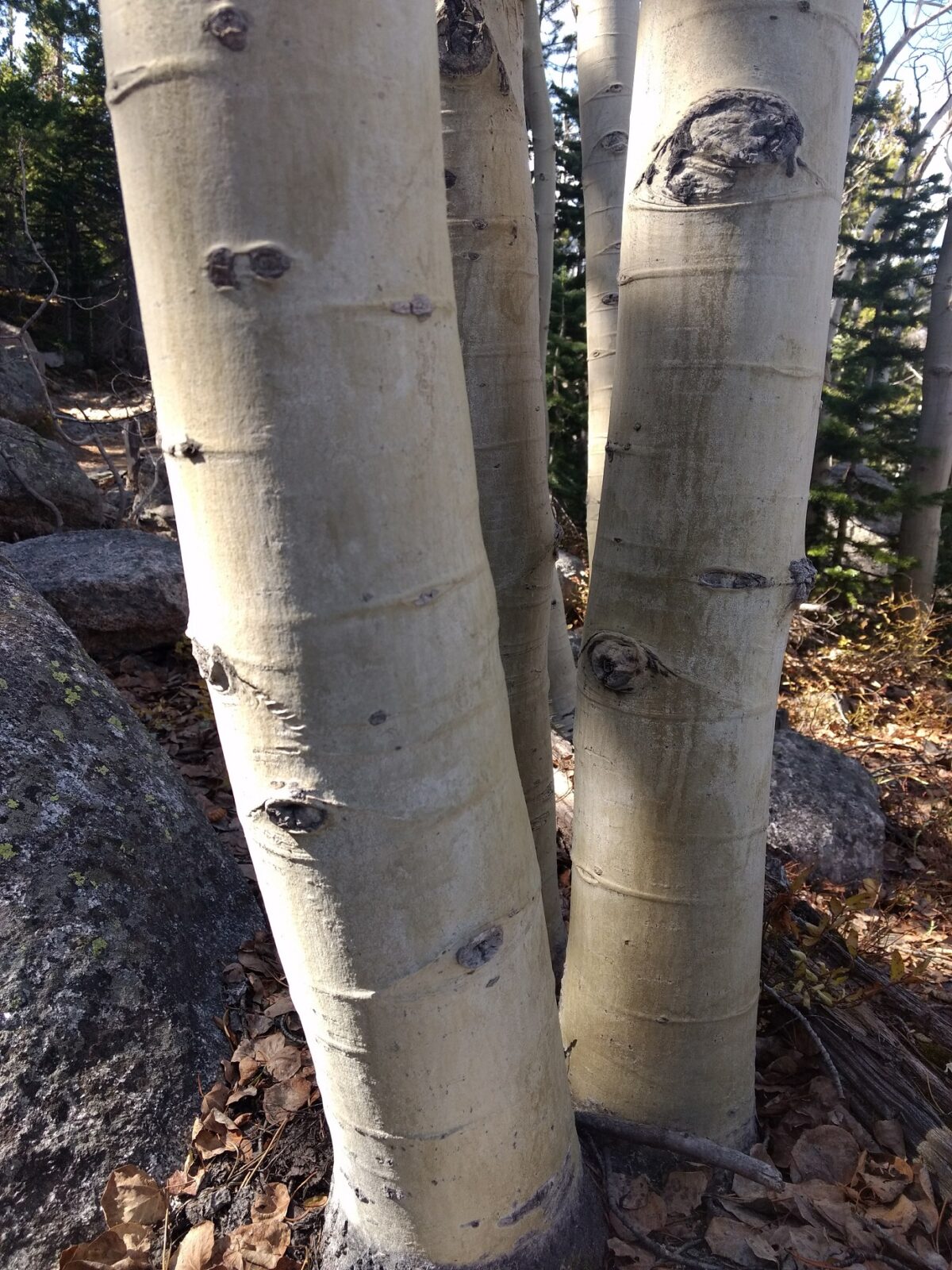Where Are All the Aspen Going?
April 28, 2023
April 28, 2023
By Garrick Bateman, Conservancy Volunteer

High above the timberline, on an otherwise placid fall morning in the alpine, a stout wind buoys past. A thousand feet below where your toes sit fastened to granite, a spectral chatter rises, as if the dotted yellow trees were whispering with you. In autumn, the aspens are hard to miss–even from a bird’s eye view. At this time of year, their leaves are a striking yellow, a soft and brilliant color that breaks up the gradient of green that ebbs the forest from ponderosa to blue spruce. And even if you closed your eyes, you would still know they were there. That chatter you just heard was their voices, the one that earned them their moniker–quaking aspen.
Later in the day, having left the mountaintop and regained the forest, you find yourself amongst that very stand. Now, in the quiet light of mid-afternoon in October, the sun is dappling at your feet, stenciled out by the delicate leaves that will be dropping any day now. These trees are also a curiosity of sorts–when you stand in the heart of an aspen grove, you do not stand amid a community, but an individual. Aspens reproduce through a process called dioecious, wherein trees of the male sex produce clones of the male sex and trees of the female sex do likewise. They spread through root sprouts, building colonies of clones one by one. It is an organism that evolves gently and quietly, that grows without anyone taking particular notice, existing at once as both one and many.

The aspen is also an organism in crisis. Around three decades ago, scientists observed a decline in quaking aspen populations that seemed to have appeared from nothing. Even today, there is no singular explanation for the phenomenon coined Sudden Aspen Decline (SAD). But some wonder if our own land management strategies have something to do with it. For decades, the mantra of American fire protection has been suppress, suppress, suppress. In the 20th century, the US Forest Service operated by a rule called the “10 AM Policy” which stated that any forest fire should be contained by 10 A.M. the morning after it had started. Nowadays, western land management techniques are finally starting to catch up to indigenous fire management practices–we now have realized that fires can actually be a healthy, regenerative part of an ecosystem’s natural cycle. And aspen groves are significant beneficiaries of regular wildfire. Because of the way the tree propagates through root stems, aspens are able to regrow quickly following fire disturbance–the beautiful white bark we see above ground might get scorched, but the clonal organism that thrives below the soil is ripe for repopulation.
Of course, this isn’t the only possible explanation for SAD–certain fungal pathogens or insects are also thought to have an impact on aspen grove health–but it seems impossible for this knowledge to not make you consider the role you play in maintaining the health of the forest. Standing in that aspen grove below the shadow of the mountain, indulging in the sweet smell of fall, it is astonishingly easy to recognize that the need to save the aspen extends beyond the realm of the ecological–they should be saved, too, just because they are that beautiful and because it would be worse to live in a world without aspen than one with them. As environmental stewards, we must ask ourselves what it is we owe to the land. When I hike, I often find myself wondering what is owed to the aspen, a tree experiencing a potentially calamitous decline shrouded in uncertainty. Maybe improper fire ecology is only part of SAD, but even so–don’t we owe it to the aspen?